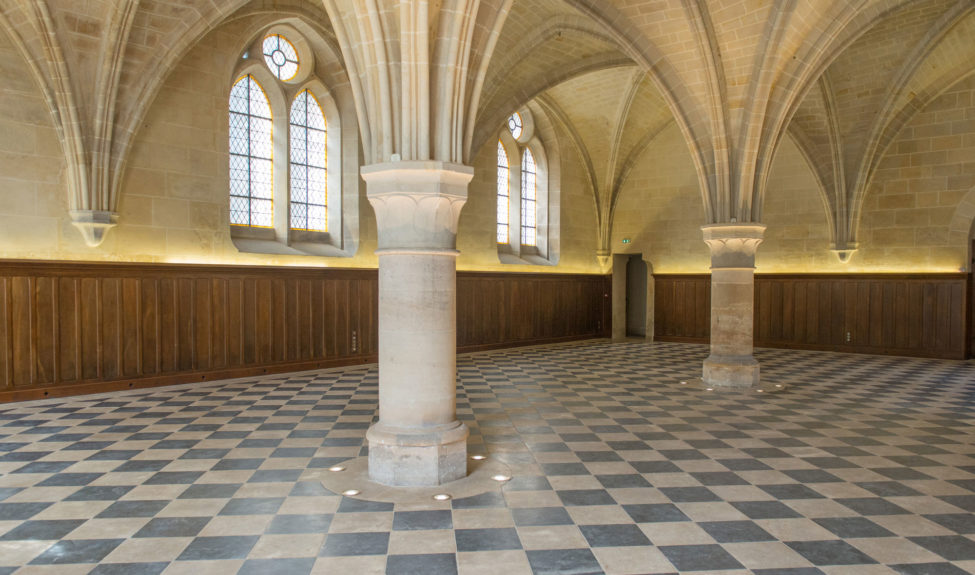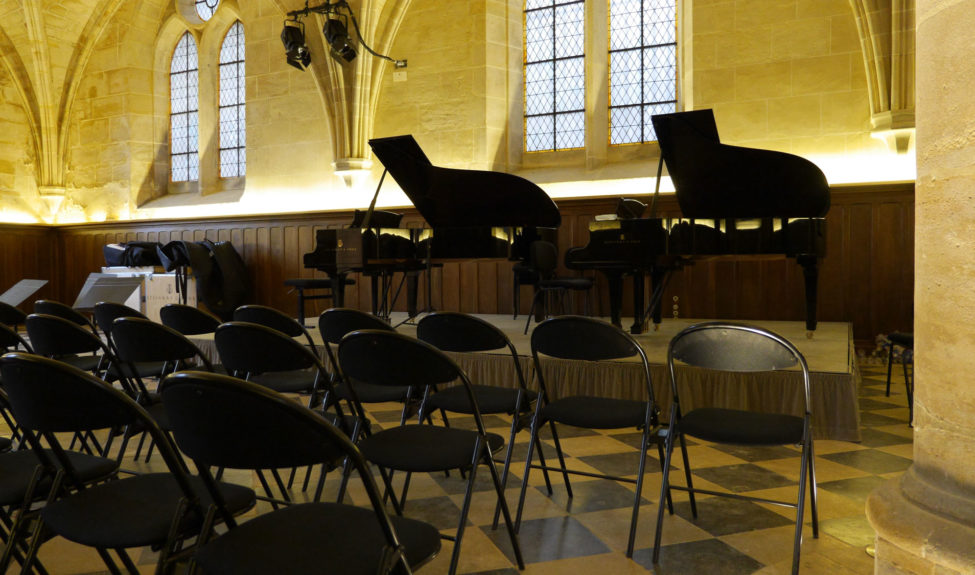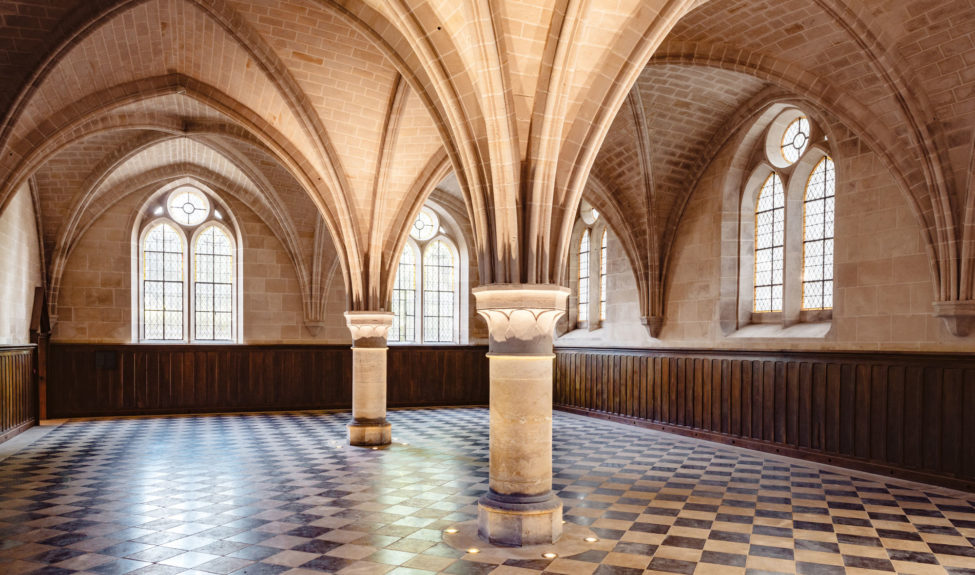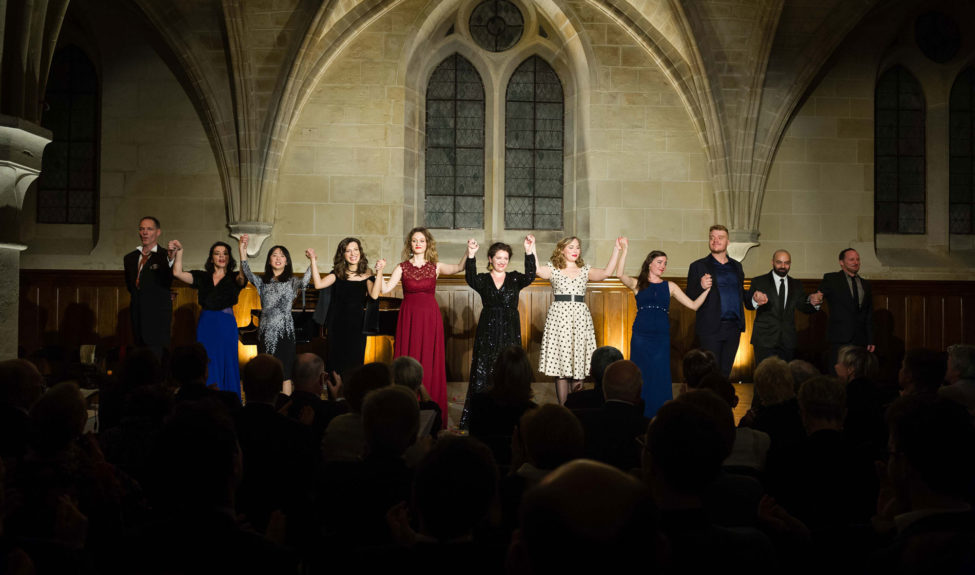The Foundation is obliged to close the access to the refectory to visitors from time to time.
We apologize for this.
The Scene of Monastic Life
This hall and the building that houses it are named after the lay brothers (those members of a religious community who, in the Middle Ages, would care for all the material aspects of the community’s life). It has however not always had a monastic function: the families of the various industrialists that ran the textile mill from 1792 to 1864 went so far as to turn it, at some point, into a theater and a ballroom.
Today the columns and vaults imagined in the Middle Ages rub shoulders with dark wood wainscoting put in during the second half of the 19th century by the Sisters of the Holy Family of Bordeaux, and with black and white tiling laid down even more recently.
An eventful past has thus produced an eerily modern décor, that now lends its good acoustics to the concerts and productions of the Royaumont Festival.
Read more
Located in the South-West corner of the abbey complex, the lay brothers’ former refectory is one of the largest halls at Royaumont, six-bayed and with ogival vaults.
Built in the 13th century, it was part of the lay brothers’ reserved area, together with the cellar to the North and the dormitory on the upper floor. It was separated from the rest of the abbey by an inner passageway, clearly identifiable to this day.
Dormitory, canteen, theater or ballroom during the industrial age, this 300 square meter hall was entirely restored in the last third of the 19th century and turned back into a refectory, to be used by the novices of the Association of the Holy Family pf Bordeaux.
Over the last thirty years the hall had been used to store exhibition and stage props. The space was altered via both vertical and horizontal partitioning and the masonry was quite damaged by damp, level with the arch haunches and the gutter walls.
After undertaking restoration work on the façade to the West in 2012, the Foundation decided to totally rehabilitate this space in 2014 and repurpose it for events (concerts, rehearsals, receptions…) to supplement the monks’ former refectory and kitchen.








